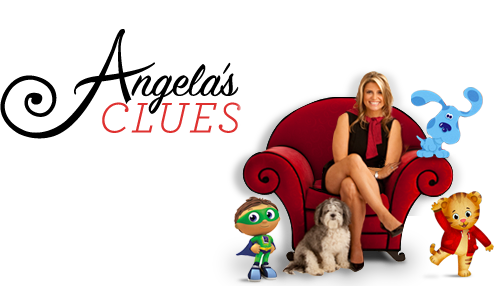Faster! Quick! Now! It seems like there’s always so much to do and not nearly enough time to do it all. If you’re like most people, you probably feel that your only choice is to speed up the pace at which you do everything just to keep up. But is that really necessary?
After all, wasn’t it “the pause” that had a lot to do with the success of Blue’s Clues, which has been on the air for an impressive 15 years? Whenever Steve asked the audience a question, he would pause for a few seconds before he made a move or gave the answer. This gave the preschool audience at home an opportunity to assess their thoughts and then voice a carefully considered decision. In a TV environment that is typically flooded with quick cuts and fast-moving action, our decision to slow it down was met with a lot of resistance. But we knew it would work and we persisted, and when we took the Blue’s Clues pilot out to research, we found that our approach was indeed a success.
In this modern, hectic world, it may feel counterintuitive to try to slow things down, but believe it or not, doing so can lead to a better quality of life.
If you’re fearful that decelerating will only lengthen your to-do list, try just one or two of my suggestions to see how you feel after slowing down the crazy train for a week:
Be a slow cooker. There seems to be more of an emphasis on the preparation speed than the quality of the actual food that is to be consumed. So take time, whenever you’re able, to pick out fresh ingredients and experiment with new recipes or cooking techniques. This will undoubtedly mean a little more time spent in the kitchen or grocery store, but consider the payoff: You’ll wake up your palate and expand your recipe repertoire. You may even find a few new favorite foods. And try to take this new slower pace to the table with you—when you sit down to enjoy your new cuisine, remember that the slower you eat, the less food you’ll need to feel full.
Check your list. Prioritize your to-do list, and if something doesn’t seem very important, delete it. For instance, we had planned an extensive redesign for our garage with fancy cubbies, elaborate hooks and adjustable shelves to the point where not only was it was requiring too much of our time but it was never going to get done. So we simplified our idea, because a garage, after all, is just a garage. Scaling down your list will give you time to really focus on the things that you need to do—and with less to worry about, they will be done that much better. There’s immense power in less.
Unplug. If you’re constantly wired, how will you find any downtime to enjoy what you’ve worked so hard to enjoy? Set up rules that you can stick to, about when the iPhone or Blackberry gets set to silent or when updating your Facebook status is off limits. In our house, we have a basket for cell phones in the kitchen, so when we’re all seated at dinner, we’re not disturbed by outside calls. You can always pick up your messages later.
Shift into medium gear.
Sometimes I’ll find myself literally speed walking to get things done around the office. Will that get things done quicker? For the short term, yes, but I’ll be spent before 5:00. The trickiest part for me is to step outside my body to see that I’m in overdrive mode and that I need to downshift. I don’t catch it all the time, but I’m working on it. Make an attempt to tune into your body and actions throughout the day. If you feel like you’re on the second leg of a triathlon, slow it down! It doesn’t have to be either the tortoise or the hare—find a nice comfortable pace in the middle. The mere act of awareness does wonders.
Did you ever think that children have so much energy because they do take the unhurried time to observe, explore and make the wonder of life so much fun without any rush? In this way, the assemblance of time seems to pass much slower for them. Just a thought to reflect on, being that you’ve slowed down.









 Overweight teens often blame their parents for not setting stricter boundaries with regard to their childhood eating habits. It’s your job as a parent to be sensible and practical in the face of your child’s immediate desires. That being said, your child should feel they have some autonomy in the food selection process. So narrow down the options for your child by offering two OR three choices that you’re OK with, and then let your child decide which one they’d like.
Overweight teens often blame their parents for not setting stricter boundaries with regard to their childhood eating habits. It’s your job as a parent to be sensible and practical in the face of your child’s immediate desires. That being said, your child should feel they have some autonomy in the food selection process. So narrow down the options for your child by offering two OR three choices that you’re OK with, and then let your child decide which one they’d like. debated with yourself over whether to toss a certain product into your cart or not. What prompts this “should I or shouldn’t I” debate? Instead of the sparkly bracelet in the cereal box, it may be clever marketing claims, special deals or strategically placed products. Speaking of strategically placed products, I swear those rich dark chocolate bars at the checkout aisle call my name quite often.
debated with yourself over whether to toss a certain product into your cart or not. What prompts this “should I or shouldn’t I” debate? Instead of the sparkly bracelet in the cereal box, it may be clever marketing claims, special deals or strategically placed products. Speaking of strategically placed products, I swear those rich dark chocolate bars at the checkout aisle call my name quite often.








 The
The 
 Children Make Terrible Pets
Children Make Terrible Pets
 Mercy Watson
Mercy Watson 
 Balloons over Broadway: The True Story of the Puppeteer of Macy’s Parade
Balloons over Broadway: The True Story of the Puppeteer of Macy’s Parade
 It’s Not What You’ve Got! Lessons for Kids on Money and Abundance
It’s Not What You’ve Got! Lessons for Kids on Money and Abundance
 The Secret Knowledge of Grownups
The Secret Knowledge of Grownups









